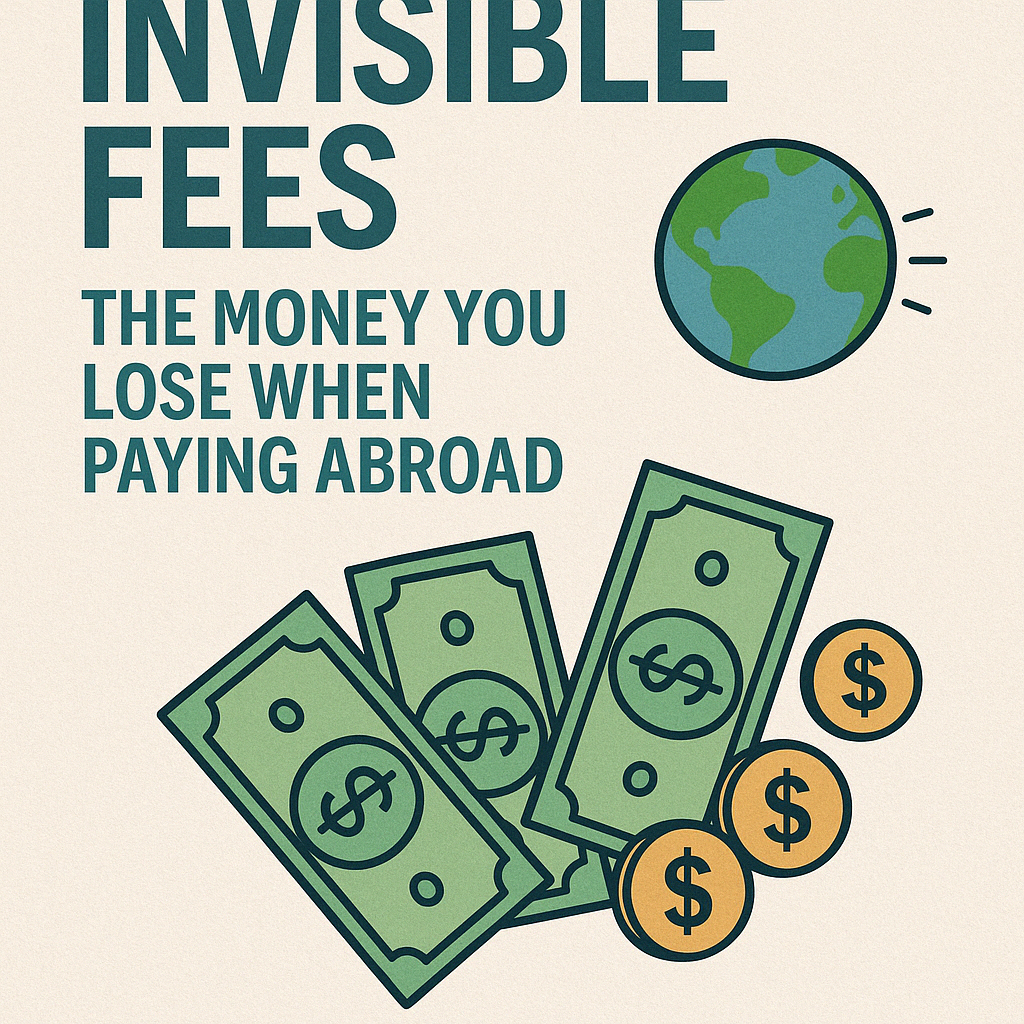You’re Losing Money Every Time You Swipe — But You Don’t Know It Yet
Here’s a harsh truth:
Every time you pay with your card abroad, you’re probably losing money.
Not because of scams. Not because you’re careless.
But because of something more invisible — hidden fees.
These fees don’t show up clearly on your receipt.
They’re quietly embedded into currency conversions, foreign transaction fees, and manipulated exchange rates.
And they add up fast.
What Are You Actually Paying For?
Let’s break down where your money is really going:
- Foreign Transaction Fees:
Usually 1–3% per purchase. Charged by your card issuer (e.g., Chase, Bank of America, Capital One). - Currency Conversion Spread:
You don’t get the real mid-market rate.
You get a marked-up rate that can cost you an additional 2–4%. - DCC (Dynamic Currency Conversion):
That friendly “Would you like to pay in USD?” message?
It often comes with a 5–8% hidden fee built in. - ATM Fees:
Many foreign ATMs charge $5–10 per withdrawal — plus your bank might add more.
Real Example: How $2,000 Turns into $1,846
Let’s say you take a 2-week trip to Korea and spend $2,000:
- Foreign transaction fees (2.5%) = $50
- Currency conversion spread (3%) = $60
- Two DCC transactions (6%) = $72
- One ATM withdrawal = $12
Total loss = $194
That’s nearly 10% of your spending gone — and you didn’t even notice.
The Most Common Mistakes Travelers Make
- Paying in USD instead of local currency
→ DCC is designed to feel convenient, but it’s a fee trap. - Using the wrong credit/debit cards
→ Not all “travel cards” are truly fee-free. - Ignoring exchange rates
→ Most people don’t realize their bank is silently profiting. - Assuming PayPal is always cheaper
→ In reality, PayPal adds a 3–4% fee for currency conversion.
Why This Isn’t Just a Travel Problem
These fees aren’t just for tourists.
They affect:
- Digital nomads: who work while traveling
- Remote freelancers: receiving or sending international payments
- International students: paying tuition, housing, or food abroad
- Everyday people: booking flights, shopping from overseas, or using foreign apps
Even small expenses — $5 here, $10 there — bleed out over months.
What Makes This Worse: The Fees Are Invisible
You never get a clear breakdown.
No receipt says “We just charged you an extra 6%.”
That’s why so many people never realize how much they’re losing.
They blame “travel costs” — when in fact, it’s bad financial tools draining them silently.
So What’s the Solution?
That’s what this 5-part series is about.
We’ll cover:
- The best debit/credit cards with zero fees
- How to avoid DCC traps
- Which apps work internationally (and which don’t)
- How to withdraw cash abroad without fee nightmares
- Real strategies to keep every dollar working for you
Coming Up Next
Part 2: Smart Cards Only – The Best Travel-Friendly Cards with Zero Fees
→ Featuring Wise, Revolut, Charles Schwab, and more.
→ Real experiences. Real savings. Zero BS.
Your money should work hard for you — not disappear with every swipe abroad.
